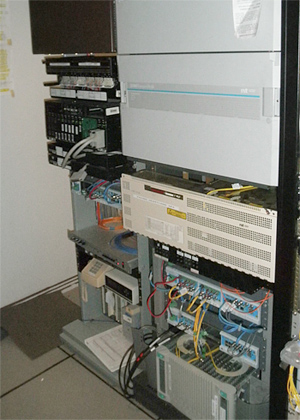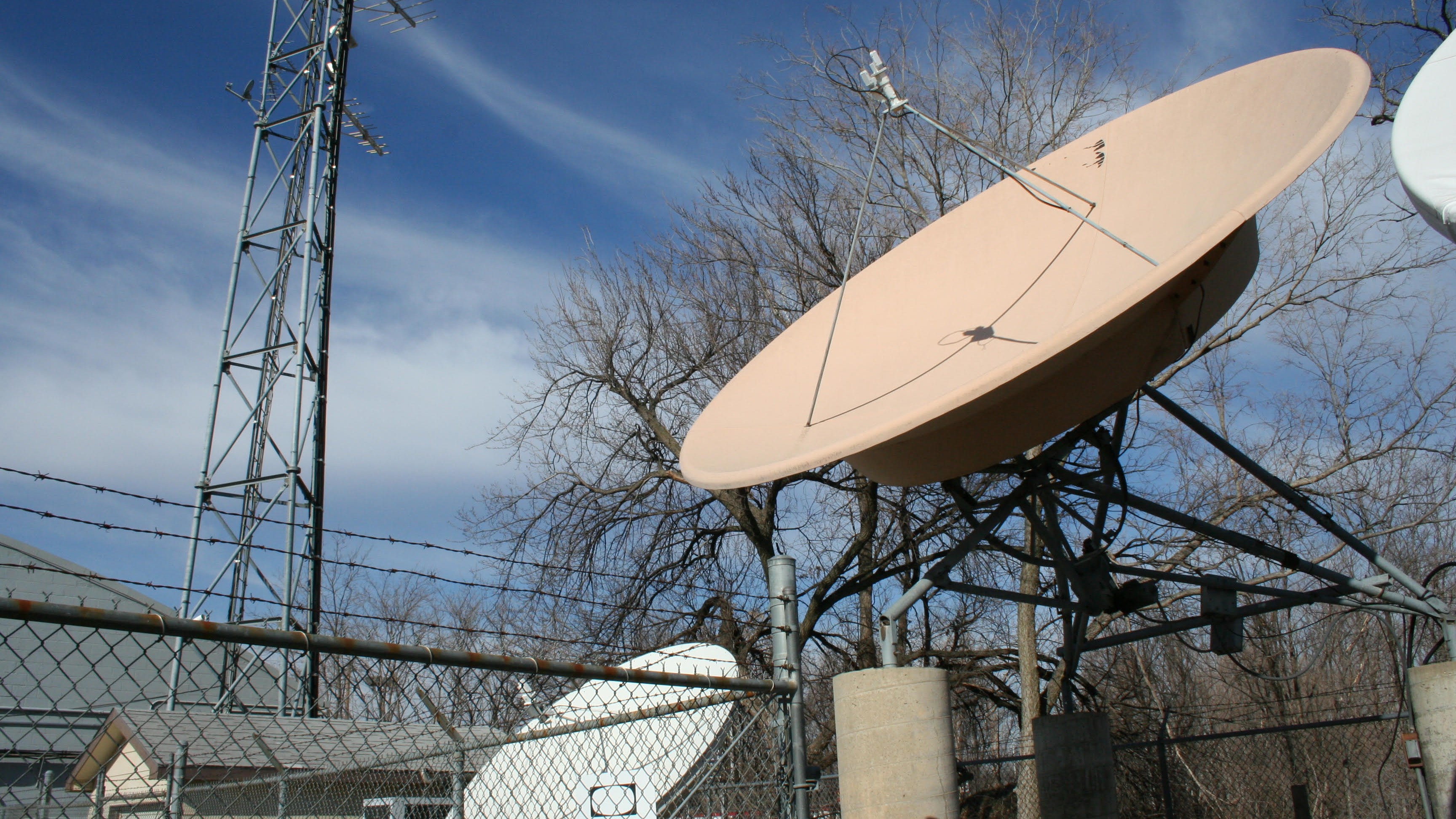Preparing for the IP Transition
JOHNSTON, IOWA: In the late 1980's, the State of Iowa passed a bill authorizing the construction of the Iowa Communications Network (ICN). The state's leaders recognized that being a rural state meant that many small communities would be disenfranchised from opportunities to grow in education, access to medical specialists and the approaching advanced communications services that were on the horizon. Iowa spent the first half of the 1990's and somewhere in the neighborhood of $200 million on construction of a private fiber-optic network. The ICN provided full motion video service to school, universities, government buildings and IPTV's then eight transmitter sites. The ICN continues to serve these facilities today.

IPTV's fiber I/O to the Iowa Communications NetworkBUGS, BUMPS & MISSED PROMISES
Of course technology has changed over time. When I first arrived at IPTV in 1999, the interconnects between the IPTV transmitters and the studios were DS3 circuits carried on a frame relay network, but the ICN had already started on conversion of the network to ATM and the video services were moving to MPEG-2. At the same time at IPTV, we were working through the technologies for transitioning to DTV.
As with any technology upgrade there were bugs, bumps and missed promises in both organizations. In that environment, I endeavored to keep IPTV from being subjected to the problems that I knew the ICN would be experiencing. At the same time I also sought to keep the problems that IPTV would encounter as isolated from the ICN as possible. I have been involved in too many system-wide upgrades where the problems in one area manifest themselves in remote areas and take forever to locate. So an agreement was reached with the ICN that whatever they did, our I/O to the network would continue to be DS3's and that we would handle all of the processes necessary to multiplex and demultiplex our then analog and digital streams into the DS3 carrier.
Ten years appears to go by much faster than one might imagine and now we find ourselves in a similar position. The ICN is now beginning to transition to IP networking. Our existing Harris NetVX interconnect system is getting a little long in the tooth and we have long since stopped sending an analog stream along with our digital transport stream. And quite frankly, our budgets have gotten tighter and we, like everyone else, are looking for efficiencies and cost savings to improve our ability to do the things that matter, like make programs. So clearly the concept of making another deal with the ICN to continue to provide us with a DS3 I/O is not practical. So what to do?
BRIDGING THE GAP
Over the last few years, as part of my work with the IEEE Broadcast Technology Society, I have been involved with the development of a training course called "Bridging the Gap." The focus of the course is to train traditional broadcast engineers like myself on the IT-based technologies that are being deployed within broadcast environments. One of the people involved in the creation of the course from very early on is Wes Simpson. Wes, who pens the "Video Networking" column for this magazine, is also one of the instructors, along with well- known broadcast consultant and expert John Luff. With the development of the BtG class, I have had a numerous conversations with Wes. He is one of those people that really knows his stuff and more importantly enjoys helping others learn it.
The build up here isn't to promote the BtG class, although I am not above that. It really is to talk about a book that I am about one third of the way through. The book is "Video Over IP" written by Wes. The folks that know me well know that I read a lot of books, magazines, white papers and such. Every now and then, I'll read a book that really sets something off in me and it is not unusual for members of my staff to get a book as a gift that I have read.
I started reading "Video Over IP" so that I could have some intelligent conversations with my staff about the prospects of converting our studio to transmitter links to IP. I also wanted to have similar conversations with the ICN so that I could ensure that our services would not be degraded. Being an "old school" broadcaster, my preference would be to have dedicated dark fiber with full control over all of the active systems involved with moving the signals back and forth. Being a realist, I recognized that is not a practical solution, so finding a compromise that makes sense is critical.
What I have discovered is that I should have read this book a long time ago. Wes' writing style is very much like his teaching style and I am learning a lot of subtle stuff that I just didn't know. The book is written very conversationally, which I like. At the end of each chapter is a checklist which I have been using as a quiz to make sure that I understand the substance of the chapter. The downside for me on the quizzes is that while I thought I would get through the book in a few days, I have had to go back and reread things more than a couple of times to make sure I fully understood the concept.
I had hoped that in this article I would be able to give a brief overview of what IPTV's plans are for IP networking via the ICN. Instead, I have discovered that I need to do a little more research and reading before I can put that into an article. I will tell some of my friends in the industry, don't be surprised if you get a copy of this book as a gift from me.
Bill Hayes is the director of engineering for Iowa Public Television. You can reach him via TV Technology.
The professional video industry's #1 source for news, trends and product and tech information. Sign up below.
Bill Hayes is the former director of engineering and technology for Iowa PBS and has been at the forefront of broadcast TV technology for more than 40 years. He’s a former president of IEEE’s Broadcast Technology Society, is a Partnership Board Member of the International Broadcasting Convention (IBC) and has contributed extensively to SMPTE and ATSC. He is a recipient of Future's 2021 Tech Leadership Award and SMPTE Fellow.

